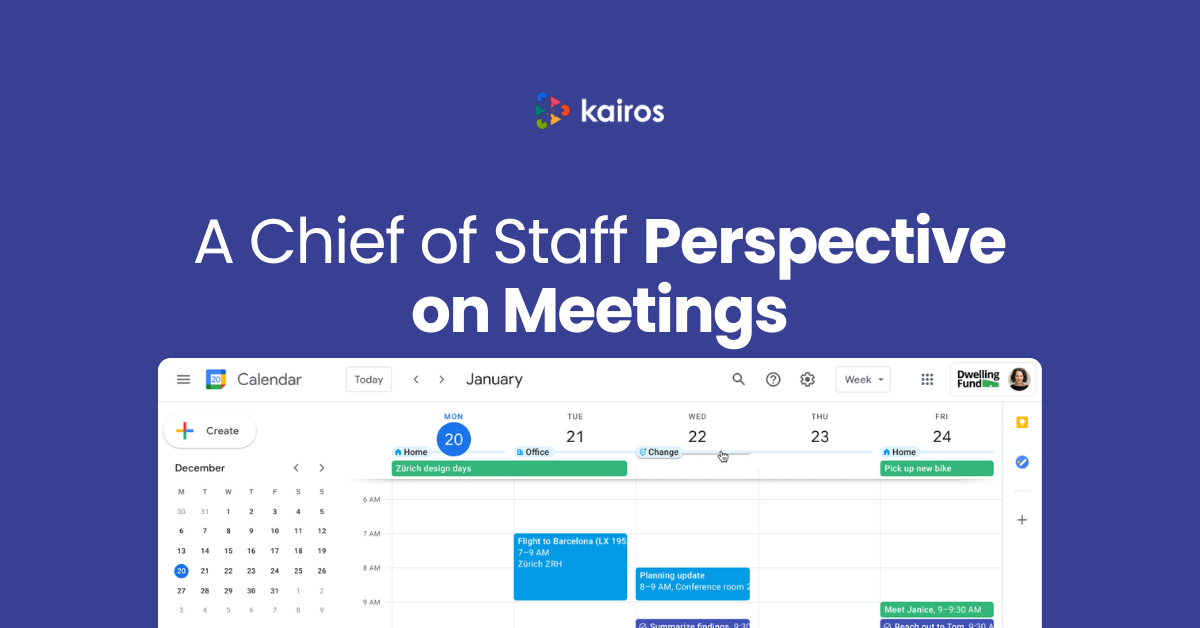How Unproductive Meetings Create Employee Churn
Cracking the Code: How Meetings Impact Employee Retention
At some point, everybody has been stuck in a corporate meeting that felt like a massive waste of time. Unproductive meetings – meetings where employees feel the use of time was a waste of time – are all too common. In an HBR survey of senior managers, the cost of wasting time in unproductive meetings was estimated at just over $8,000 per day.[1] But wasted time in meetings is just the tip of the iceberg. A study from as early as 2010[2] by Dr. Steven Rogelberg identified the link between meeting satisfaction, job satisfaction, and employee churn.
The bad news is that when we're stuck in unproductive meetings, we aren't usually focused on the cost of the time we're wasting, the related psychological impact ... and probably least of all on the possibility of losing employees who are bored or frustrated at meetings. And here's the good news – the fix isn't as challenging as you may think! When you change your meeting culture from wasteful to productive and from boring to engaging this and other studies indicate that you can have a massive impact on job satisfaction.
Effective meetings are kind of like a secret weapon. With a relatively small amount of knowledge and understanding of what’s happening in your workplace, you’ve got a powerful combination and a first tool and strategy to start to change things for the better. When you use tools that are designed to improve meeting culture, you can keep your employees satisfied and enthusiastic about work. Let's dive into how this works.
What Does Science Say?
Providing Evidence of the Link Between Job Satisfaction and Employee Meeting Satisfaction
In Dr. Rogelberg's 2010[3] study, his team of researchers looked at how satisfaction with workplace meetings relates to job satisfaction and employee retention. The researchers surveyed working adults and asked about their satisfaction with meetings, overall job satisfaction, and other related aspects.
When researchers looked at the data, they noticed that the relationship between meeting satisfaction and job satisfaction was more robust for those with high meeting demands than those with low meeting demands. In simpler terms, when people had more meetings to attend, their happiness with those meetings played a more significant role in how happy they were with their jobs. Therefore, if an employee experiences a number of unproductive meetings every day, there's a strong chance they're unhappy with their career.
The study also found that an employee's experience in meetings affected their overall job attitudes. This means that understanding how people feel about the meeting they attend is a decent proxy for how they feel about their jobs. The research emphasizes that meeting satisfaction isn't just a stand-in for other related job satisfaction factors. It's a unique and essential predictor of job satisfaction. Another study from 2021[4] discovered that regular and positive recognition in meetings acts as a retention factor; reinforcing the idea that employees are on the right path and valued within the organization. As a result, employees who find value in meetings and receive recognition during the meetings may exhibit lower turnover rates.
Employee retention is also discussed in the 2010 study, which hinted that there's a link between meetings and turnover. Employees who were satisfied with their meetings were likely to be happy with their jobs. In turn, they usually stayed with their company. While the link is there, it's essential to consider that it might not be the only factor influencing employee retention. Other aspects of the job environment and personal preferences also play a role.
Even so, meetings play a significant role in crafting a company's culture. When meetings are boring, long, and feel like a poor use of time, this research indicates that it creates negative feelings about their job. On the other hand, employees whose meetings are productive, focused, and necessary are likely to feel more pleased with the company they work for and the everyday quality of their occupation.
So What? Now What?
What Does the Satisfaction Link Look Like in Your Organizational Culture?
Every day, the people who are leading your meetings control something that might slip under the radar—employee churn. These leaders are shaping the employee experience every day, in every meeting. However, it is rare that a meeting leader considers how their meetings may be damaging the organizations culture. Making meeting leaders aware of the link between meeting satisfaction and employee churn is an important step in creating a culture of stewardship of time and talent.
But who’s job is it to do that? Have you ever wished someone was dedicated to ensuring meetings aren't just time-fillers? Someone who makes sure that gatherings nurture a positive work environment?
Meet the possible hero in the battle against employee churn: the Chief Meeting Officer (CMO). This job involves training meeting leaders to better handle meeting-related issues and coaching leaders to improve their approach to meetings. Precious few organizations have recognized the importance of this role and because of this, they are unwittingly adding fuel to the fire of employee turnover.
Even without a CMO, how would your organization go about understanding if your meetings are of the kind that research indicates contributes to employee turnover? The first step is seeking feedback from meeting attendees. Create an environment where meeting attendees feel safe to share their thoughts - not just on productivity but on engagement and inclusivity, too. Meeting leaders can actively work to make meetings a positive experience by being open and receptive to feedback. Including questions about unproductive meetings in employee surveys can be the first step toward creating a culture that values meaningful and productive meeting interactions. With regular feedback loops, you can have better management discussions and even set KPIs to improve meeting leadership where appropriate.
In short, there are many approaches to improving your meeting culture so you can stop employee churn in its tracks. Meeting leaders within your organization play a massive role in making this change, but only if they listen to meeting attendees. Every voice must be heard when looking at improving the culture of your meetings. After all, employee satisfaction is not a one-size-fits-all solution.
Improving meetings at your organization is possible, but it takes focus and time
Fixing the meeting culture in your company is a tricky task. It requires a fresh perspective and a commitment to making lasting, positive changes in the lives of your employees. Gatherings are the lifeblood of an organization. Changing them for good requires well-thought-out strategies, innovative approaches, and the resolve to follow through. By unearthing the problems in your meeting culture, you can take a first step toward halting one of the contributors to employee churn.
Building the groundwork involves collecting data, taking in employee feedback, and accepting new approaches. Yet, it's key to recognize that reshaping your meetings and tackling employee churn isn't an overnight feat. Instead, it's a long journey that demands time and effort. It's possible for anybody, but it will take time, focus, and work.
If you're committed to combating employee churn in your corporate culture, Kairos Learning Lab is here to help.
- Our thorough assessments dive into your current meeting practices, identifying areas for improvement.
- Through expertly designed training, we address common meeting challenges.
- Integrated tools and reminders ensure these positive changes become ingrained.
This process nurtures an efficient meeting culture throughout your organization. It's not a quick fix but a deliberate journey toward lasting change – benefiting your company and all the individuals who contribute to its strength.
REFERENCES
[1] Menon and Thompson. Putting a Price on People Problems at Work, Harvard Business Review, 2016
[2] Rogelberg, S. G., Allen, J. A., Shanock, L., Scott, C. W., Shuffler, M. (2010). Employee satisfaction with their meetings: A unique predictor of job satisfaction. Human Resource Management, 49(2), 149–172.
[3] Rogelberg, S. G., Allen, J. A., Shanock, L., Scott, C. W., Shuffler, M. (2010). Employee satisfaction with their meetings: A unique predictor of job satisfaction. Human Resource Management, 49(2), 149–172.
[4] Macey, W. H., Schneider, B., Barbera, K. M., & Young, S. A. (2009). Employee Engagement: Tools for Analysis, Practice, and Competitive Advantage. Hoboken, NJ: John Wiley & Sons. https://doi.org/10.1002/9781444306538
We're Here to Help. We'll Make it Easy.
We understand that improving meetings can be difficult, which is why we exist. Talk to one of our Kairos specialists today to get started on the path to happier employees who value the time they spend in meetings.
.png)

